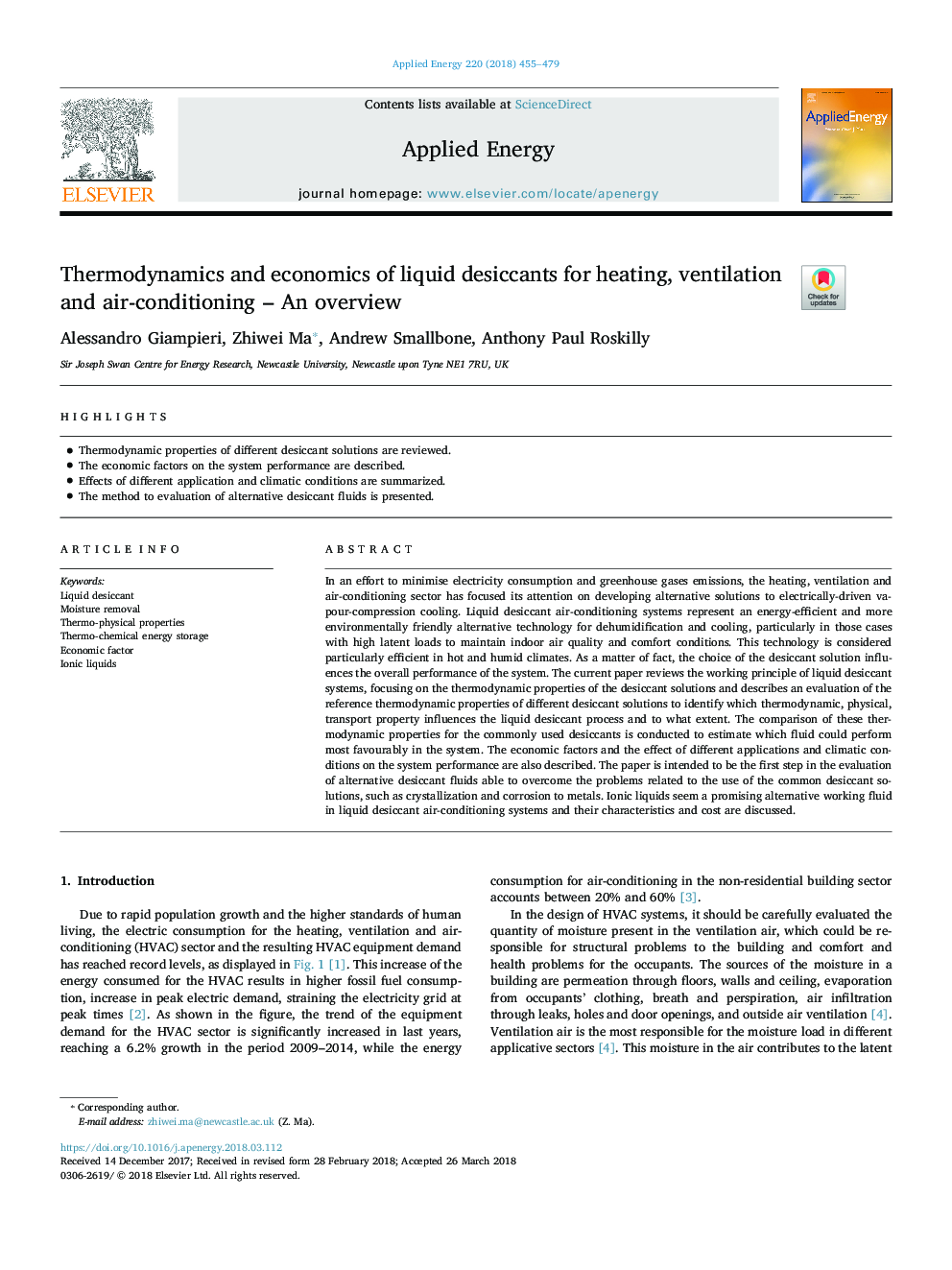| Article ID | Journal | Published Year | Pages | File Type |
|---|---|---|---|---|
| 6680398 | Applied Energy | 2018 | 25 Pages |
Abstract
In an effort to minimise electricity consumption and greenhouse gases emissions, the heating, ventilation and air-conditioning sector has focused its attention on developing alternative solutions to electrically-driven vapour-compression cooling. Liquid desiccant air-conditioning systems represent an energy-efficient and more environmentally friendly alternative technology for dehumidification and cooling, particularly in those cases with high latent loads to maintain indoor air quality and comfort conditions. This technology is considered particularly efficient in hot and humid climates. As a matter of fact, the choice of the desiccant solution influences the overall performance of the system. The current paper reviews the working principle of liquid desiccant systems, focusing on the thermodynamic properties of the desiccant solutions and describes an evaluation of the reference thermodynamic properties of different desiccant solutions to identify which thermodynamic, physical, transport property influences the liquid desiccant process and to what extent. The comparison of these thermodynamic properties for the commonly used desiccants is conducted to estimate which fluid could perform most favourably in the system. The economic factors and the effect of different applications and climatic conditions on the system performance are also described. The paper is intended to be the first step in the evaluation of alternative desiccant fluids able to overcome the problems related to the use of the common desiccant solutions, such as crystallization and corrosion to metals. Ionic liquids seem a promising alternative working fluid in liquid desiccant air-conditioning systems and their characteristics and cost are discussed.
Related Topics
Physical Sciences and Engineering
Energy
Energy Engineering and Power Technology
Authors
Alessandro Giampieri, Zhiwei Ma, Andrew Smallbone, Anthony Paul Roskilly,
